Invented by bushcraft master Mors Kochanski, the Flip Flop Winch is an improvised winch for pulling large loads. It’s a wonderful piece of bush ingenuity, and easily powerful enough to pull a car out of a ditch. Well worth learning.
The Flip Flop Winch uses only a length of strong line and two stout sticks, so can be constructed easily pretty much anywhere if you carry a saw or axe.
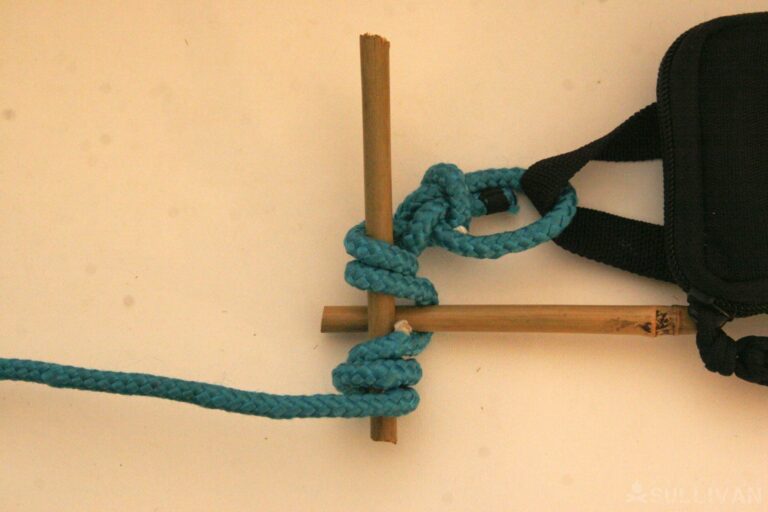
You want two good strong sticks, ideally small sapling trunks are probably best.
The longer the better (up to a point where the poles become unmanageable), because the operation of the winch relies on levers, and a longer lever will make the operation easier.
It won’t lessen the total energy required, but it will mean that less energy is required at once, so even a very weak person could shift a heavy load over time.
The Flip Flop Winch’s inventor Mors Kochanski is an incredible bushcraft and survival expert. In his own words, he has “spent a lifetime gathering Bushcraft knowledge and has been an instructor for over 40 years”, and is famed for saying “The more you know, the less you carry.”
Step 1. Begin by securing the line to load and the anchor, with loops or hitches, In this picture the load is the black strap on the right hand side of the photograph, and the anchor is out of sight on the left hand sight. Note that the first stick has been put underneath the line.
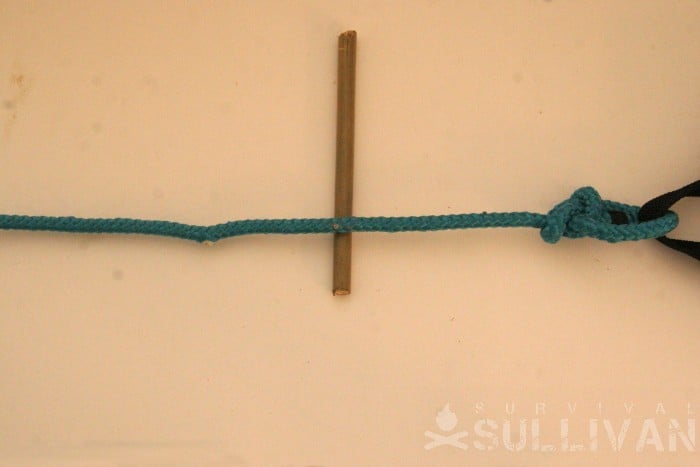
Note carefully it’s position: about halfway between the load and anchor, at right angles to the line and with most of the stick (about three quarters) on one side of the line.
Step 2. Make a bight in the line, pulling out the slack to make between the stick and the load, and going towards the ‘long side’ of the stick (the part of the stick which protrudes further out from the line).
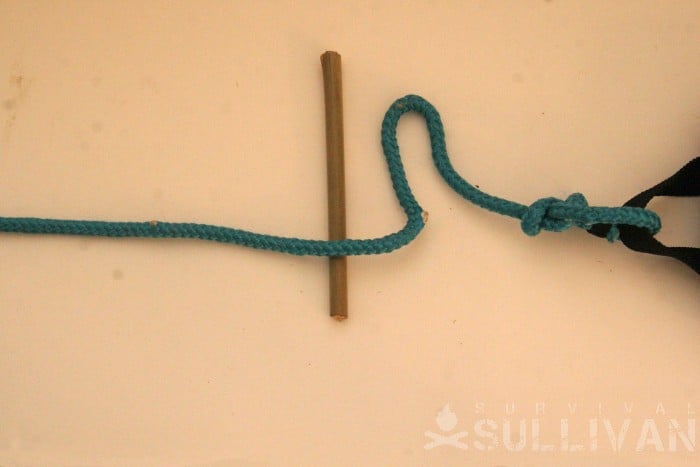
This stick will be referred to as the ‘drum pole’ (because the line will be wound around it).
Step 3. Pass the bight under the drum pole (on the long side), going away from the load:
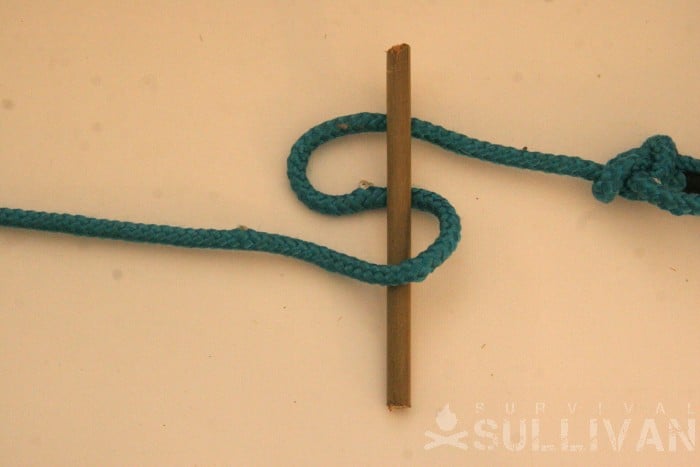
Step 4. Pass the second stick a little way through the bight. The bight itself should be over this new stick, but the stick itself should be over the drum pole (and at right angles to it) as in the picture below.
Notice how the new stick is not passed very far (maybe a quarter of it’s length at most) under the bight.
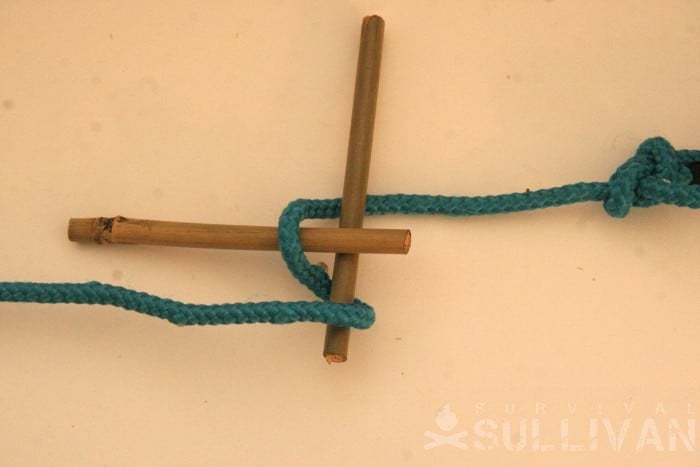
This new stick will be the ‘lever pole’.
Step 5. You are now completely set up. To use the winch, hold the outer end (the end furthest away from the bight) of the lever pole and swing it up and over where it crossed the drum pole, bringing it down on the other side. See how this pulls the bight around the drum pole, winding some line onto it.
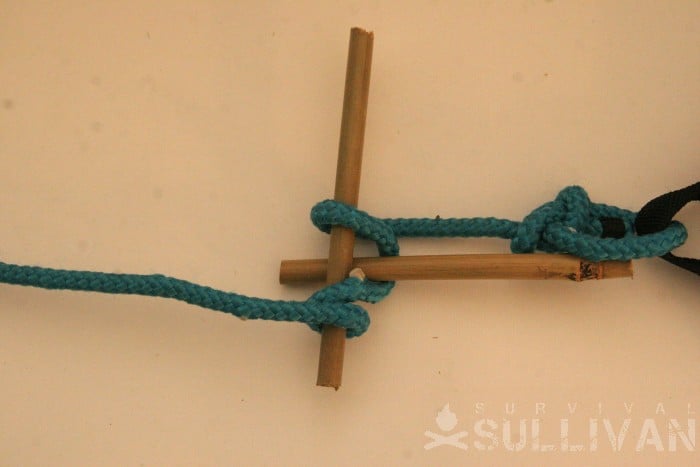
Step 6. Now bring the drum pole up and over, across the lever pole. Notice how this makes the lever pole the upper stick again, so that you can…
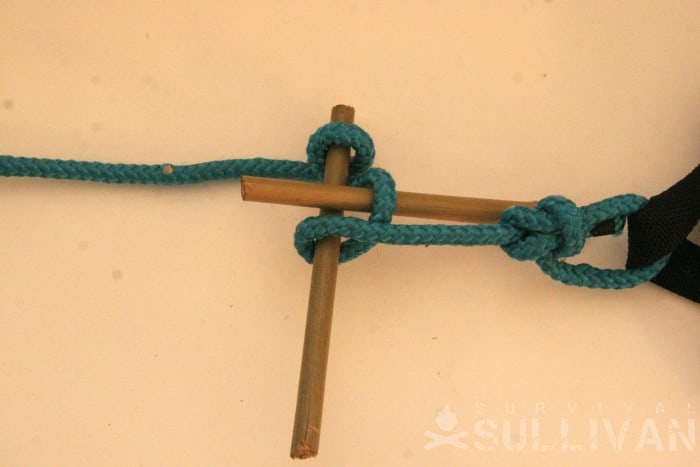
Step 7. …bring the lever pole up and over again:
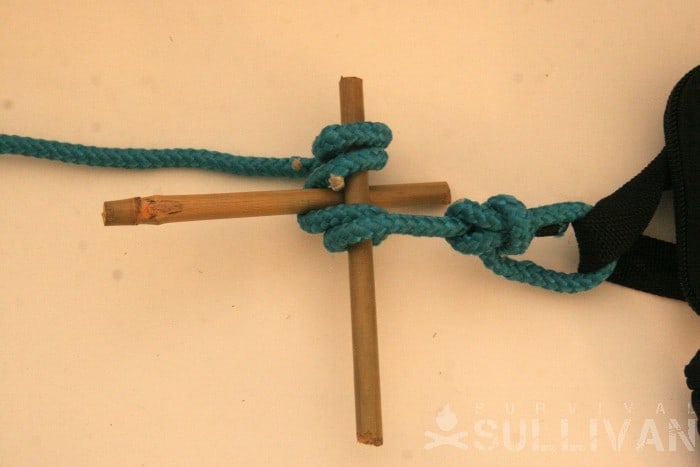
Step 8. You guessed it, bring the drum pole over again too. Now you should end up back where you started:
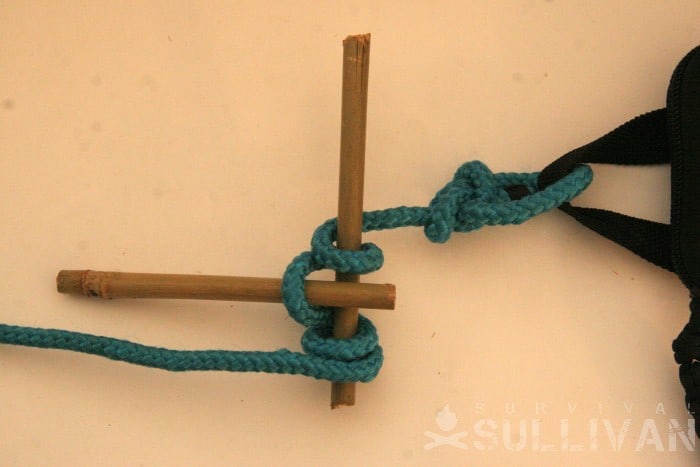
Step 9. Continue this process of flipping each pole over alternately until the load has been moved sufficiently:

Related Knots
- The Tourniquet is a similar rope structure using a stick twisted into a line to produce tension, though it produces significantly less mechanical advantage, which only lessens as the twists progress, and tension must be kept on at all times for it to be effective. For larger scale purposes the Flip Flop Winch is infinitely preferable, though for smaller things like cutting off blood to a wound a tourniquet can be good.
- The Spanish Windlass is a similar winching system to the Flip FLop Winch where the drum pole is upright, and the lever pole is pulled in continuous circles around it. This is good for smaller loads, but can be difficult as the friction of the drum pole makes it difficult to move the lever, and tension has to be maintained at all times, which can be very tiring.
Check out even more survival knots in our guide.
Conclusion
The Flip Flop winch is an ingenious system for pulling high loads easily, and every backwoodsman, bushcrafter or knotter should learn it.
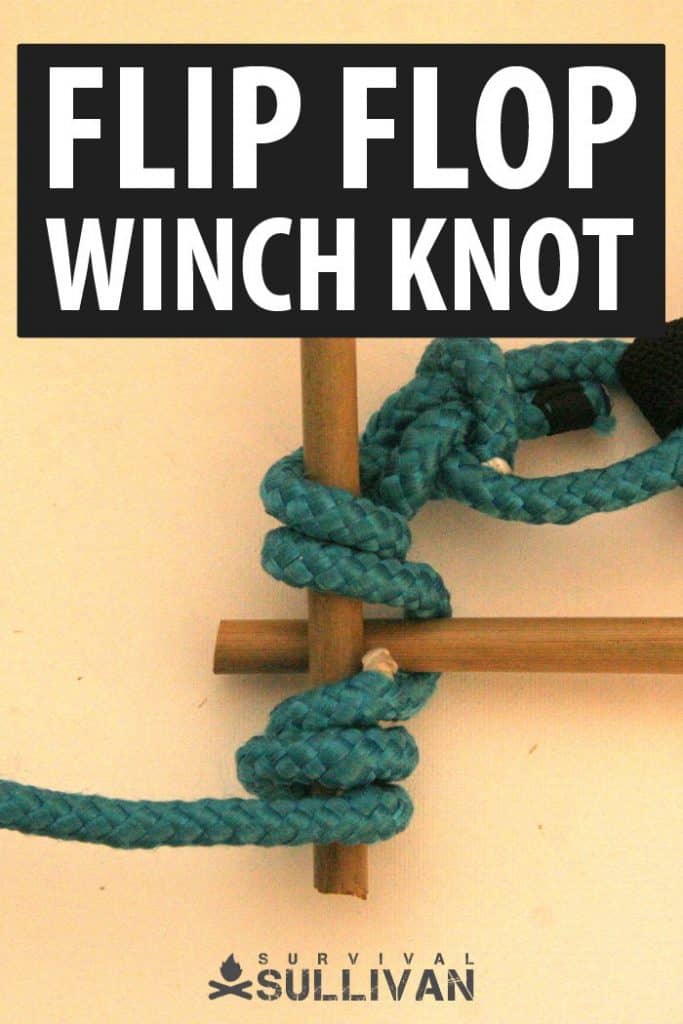
Nick O’Law has been exposed to survival from a very young age. In his teenage years, he learned A LOT about bushcrafting, such as making snares and traps, and even how to make DIY knives.
If you haven’t ye read and tried his knot-making articles on Survival Sullivan, you should definitely check them out.
